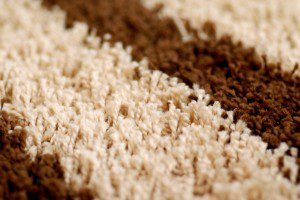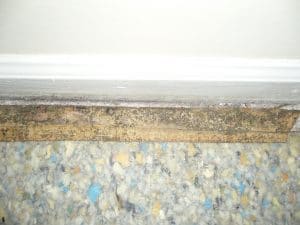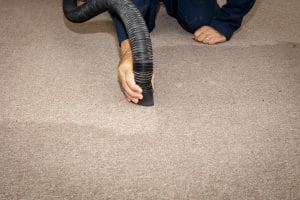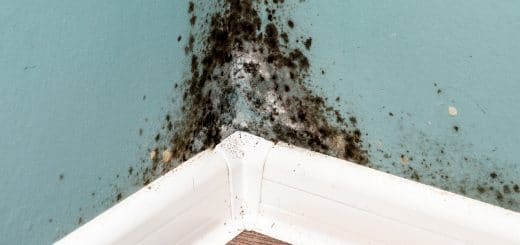How to Remove Old Carpet: DIY Tips
If you’re getting into the DIY spirit with your home, you might be moving on to the floors sometime in the near future. Looking to upgrade from your old carpet and replace it with something new? Removing your old carpet DIY-style might be easier than you thought it would be.
Carpeting can get worn over time through regular tread, water damage and/or stains. While ripping up the carpet might seem a bit overwhelming, it will be worth it to update the carpet or replace it entirely with a different type of flooring.
Here are some of the ways you can protect yourself and get everything done quickly and efficiently. All you need are the right materials, a good guide, and a bit of motivation.
1. Get Protective Gear
This is the most important first step in most DIY projects, especially when it comes to projects that require sharp tools, like carpet removal.
Everything from tack strips to utility knives can cause issues when it comes to safety, so using protective gloves and closed-toed shoes should be among the top priorities. That way, you can keep yourself safe without having to worry.
2. Try Pulling First
When it comes to getting down to business and removing the carpeting in place, you don’t want to do any more work than you have to.
Most of the time, the carpet isn’t stuck under a baseboard, which means you don’t need to remove the baseboards all the time to get the carpet up. If you start at the corner and try pulling, you might surprise yourself at how far you get.
3. Use a Utility Knife
If the method of pulling the carpet doesn’t work out at first, you can use a utility knife to cut a small square of carpet from the corner of a room and pull from that point to get the carpet up.
While pulling at first might work, you don’t need to strain yourself. Specifically, using quality tools when you need them can actually make a huge difference.
4. Be Careful Around Tack Strips
Carpet is held down by tack strips, also known as the strips around the perimeter of the room that secure the carpeting. Simply put, these strips can hurt you if you’re not careful, so make sure you avoid them whenever you can and don’t step on them.
5. Remove Rusted Tack Strips
Another issue with these tack strips is their ability to rustRust is a reddish-brown oxide that forms on iron or steel du... More and corrode from wear, tear, and moisture. This is especially the case after a few years with the same carpeting.
Once you get your carpeting up, make sure you check for rusted tack strips and remove them. If you notice damage on these, it could also mean damage on your subfloorThe subfloor is the foundational layer beneath flooring mate... More, so it’s worth it to check on that, too.
6. Check Your Subfloor
Even if you haven’t noticed too much damage on your tack strips, make sure you double-check your subfloor once the carpet is up and out of the way. The wood strips could be damaged or otherwise compromised, so just make sure you feel safe before you put in any new flooring.
You can walk on the floors and even jump up and down — safely, of course — to check.
Removing Old Carpet on Your Own
Every home is unique and different, and there’s no reason why you can’t accomplish DIY projects how you want them. Removing carpeting is all about using the right skills, tools, and materials to get it right so you can bring in a brand-new floor that makes you happy.
Evelyn Long is the editor-in-chief of Renovated, a home improvement site with tips for homeowners and contractors.
Water and Mold-Damaged Carpet
If your carpet was also affected by water or mold damage, emergency removal is necessary to prevent the damage from spreading. When moldMold is a type of fungus that grows in damp or humid conditi... More spreads, it will consume the surrounding porousPorous describes a material that contains small openings or ... More materials as well as trigger a number of health issues for everyone in the family.
It’s important to contact a restorationRestoration is the process of returning a property to its pr... More company to quickly remove the damaged carpet or dry it in place, depending on the amount of damage. Water damage restoration experts will use professional dryingDrying is the process of removing moisture from materials, s... More equipment and techniques to dry out the area efficiently and effectively so you don’t have to worry about it spreading. They will also apply anti-microbials to prevent future moldMold is a type of fungus that grows in damp or humid conditi... More growth.
If any moldMold is a type of fungus that grows in damp or humid conditi... More was present, licensed water damage restoration contractors also provide moldMold is a type of fungus that grows in damp or humid conditi... More removal services and will remove the moldMold is a type of fungus that grows in damp or humid conditi... More at the source. Using advanced products and methods to remove it and the remaining sporesSpores are microscopic reproductive units of fungi or mold t... More, you can be sure the affected area is safe, dry and ready to use again.












